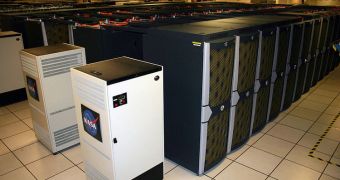Using the amazing capabilities of the NASA Pleiades supercomputer, a team of American experts was recently able to develop the most comprehensive, complex and encompassing simulation of how the Universe evolved since the Big Bang.
Based on the Bolshoi simulation code, the new model was capable of producing a viable scientific explanation for how galaxies evolved over more than 13 billion years. The data may be used to derive new cosmological theories based on available evidence.
According to researchers, the purpose of this investigation was to focus on the way galaxies and larger-scale galactic clusters – such as clusters and superclusters – formed shortly after the Cosmos did.
Another objective was to track the development of these formations over time, as they were being influenced by cosmic expansion, the reionization epoch, supernova blasts and other such phenomena.
This investigation was carried out by experts with the New Mexico State University (NMSU), in Las Cruces, New Mexico and the University of California in Santa Cruz (UCSC) High-Performance Astrocomputing Center (UC-HIPACC), in California.
The Bolshoi code was run on Pleiades for a total of 18 days, which means that the 111,872 cores processing the supercomputer spent millions of hours of computing time creating the complex simulation. Pleiades is the seventh most powerful computer in the world.
“NASA installs systems like Pleiades, that are able to run single jobs that span tens of thousands of processors, to facilitate scientific discovery,” explains research scientist William Thigpen.
He holds an appointment as a systems and engineering branch chief at the NASA Ames Research Center (ARC) Advanced Supercomputing Division (NAS). The expert explains that the Bolshoi code was capable of simulating the distribution of dark matter over an entire light-year in all directions.
“The Bolshoi simulation is an excellent example of work done in support of NASA’s science goal to understand how stars, galaxies and planets are formed, in order to get a picture of how the universe has changed over billions of years,” Thigpen explains.
The bulk of the data on which this model was based was collected by the NASA Wilkinson Microwave Anisotropy Probe (WMAP), a successful satellite mission dedicated to analyzing the nature of the cosmic microwave background (CMB).
The latter is made up of lingering radiations that were released throughout the Cosmos when the Big Bang occurred. The CMB represents the signature of early matter in the Universe, scientists say.

 14 DAY TRIAL //
14 DAY TRIAL //